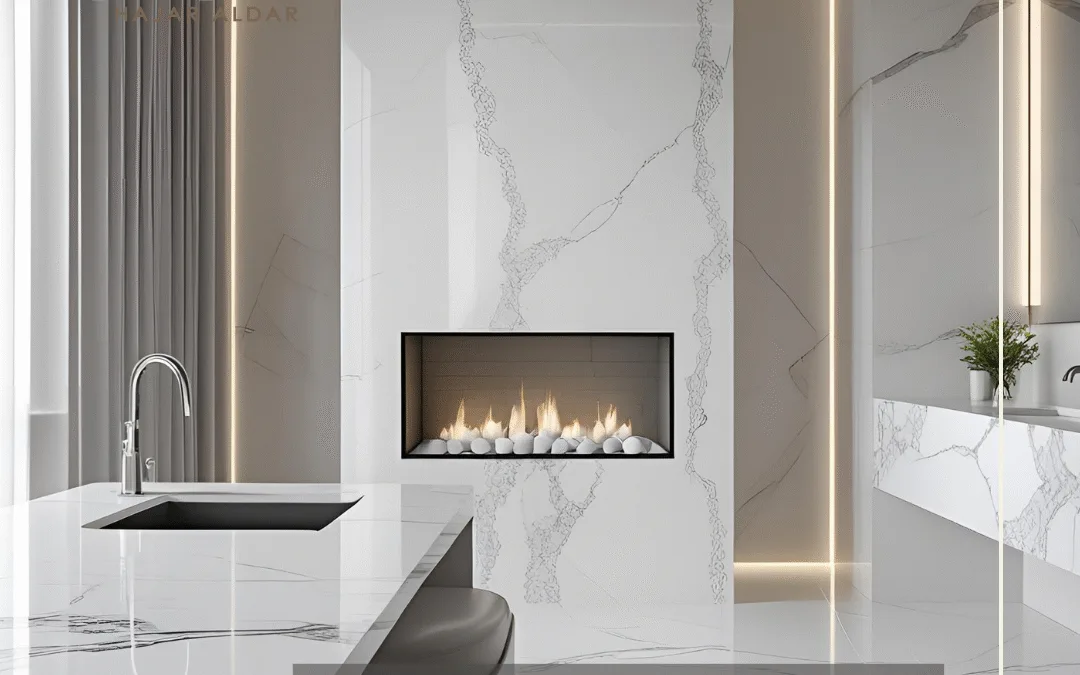Why Does White Marble Remain Designers’ Top Choice?
Introduction
In the world of interior design, trends and fashions change rapidly, yet some materials retain their value and appeal over time. Among these, white marble stands out as a steadfast first choice for many designers worldwide. But what makes white marble hold this special status? Is it its beauty, versatility, or timeless elegance? This article explores the technical, psychological, and aesthetic reasons why white marble remains the favored choice for designers.
-
Symbol of Purity and Luxurious Simplicity
White marble symbolizes purity and clarity, concepts directly linked to visual and psychological comfort. Light colors generally reflect light and create a sense of openness, but white, in particular, enhances feelings of cleanliness and calm. When this color comes from a natural material like marble, it transforms into an expression of refined simplicity.
-
Perfect Harmony with All Styles
White marble boasts remarkable versatility that makes it compatible with all interior design styles:
-
In classical designs, its subtle veins add an aristocratic touch.
-
In modern styles, it brightens spaces and adds elegance.
-
In industrial styles, it provides visual balance against rough materials like metal or concrete.
This comprehensive compatibility makes it a safe choice for designers, especially in projects with diverse tastes.
-
Enhances Natural Lighting
Thanks to its light color and reflective surface, white marble amplifies natural light in interior spaces. This is a crucial advantage in rooms with small windows or limited lighting. The light reflected off marble surfaces creates a sense of spaciousness and purity.
-
Timeless Luxury That Defies Time
Fashion trends come and go, but white marble always remains prominent. Its long history in classical architecture—from Greek temples to Renaissance palaces—gives it a timeless character. Therefore, when used in modern projects, it adds a sense of depth and heritage without appearing outdated.
-
Variety of Types and Finishes
White marble is not just one color; it includes a wide spectrum of types:
-
Italian Carrara marble with soft gray veins.
-
Luxurious Calacatta with gold or gray veins.
-
Thassos marble from Greece known for its intense whiteness.
It can also be polished with different finishes: -
Glossy to highlight luxury.
-
Matte for a natural, soft texture.
-
Textured for a contemporary earthy feel.
-
A Canvas for Creativity
White marble is not just a material, but a “canvas” for designers to innovate. It can be cut and shaped in many ways:
-
Incorporating copper or metallic inlays.
-
Combining with wood or glass.
-
Used in walls, floors, countertops, and even furniture.
This creative freedom makes it a favorite for projects demanding visual distinction.
-
Reflects Refined Taste
When a visitor or client sees white marble in a space, it immediately conveys that the place was designed with care and taste. It expresses understated luxury and professionalism, leaving an impression of sophistication without exaggeration.
-
Real Estate and Marketing Value
The presence of white marble in properties—whether on floors, bathrooms, or kitchens—is a strong selling point. Buyers associate it with luxury and quality, which raises the market value and facilitates quicker sales or rentals.
-
Harmony with Modern Technology
In contemporary designs that rely on AI or smart lighting systems, white marble serves as an ideal backdrop. Its neutral tone highlights screens, devices, and LED lighting without distraction, adding a touch of elegance.
-
Renewable and Sustainable Material
White marble is a natural material and can be considered an eco-friendly choice when responsibly sourced. Its long lifespan reduces the need for frequent replacements, aligning well with sustainability principles in modern design.
Conclusion
The reason white marble remains designers’ first choice is not due to one factor alone, but a harmonious blend of natural beauty, design flexibility, and psychological symbolism. It expresses the designer’s taste, enhances user experience, and gives spaces an enduring presence.
Whether you are designing a luxurious palace or a small apartment, white marble will remain your trusted companion toward both luxury and simplicity.


